A toaster might look simple, but it’s full of science; it’s a clever mix of physics, chemistry and invention. Special metals get hot and start chemical reactions that turn bread crispy and golden brown, and smart design helps spread the heat evenly and pops the toast up at just the right time. But there’s more to this breakfast applicance—its story includes a hoax that still fools people today. Science communicator Ceana
Priest shares the surprising science and history behind this everyday gadget.
A heated history
Humans have been toasting bread for thousands of years, long before electric toasters were around. Back then, there were no plugs or buttons—just fire and a bit of creativity. People toasted their bread on hot stones by the flames, which not only gave it that perfect crunch but also kept it fresh and mould-free. The ancient Egyptians were among the first to toast bread, and the Romans adopted the idea around 500 B.C.; the word ‘toast’ comes from the Latin word tostum, meaning ‘to burn or scorch.’ As time went on, people used sticks to hold bread over flames, kind of like toasting marshmallows. Then, in the 1880s, when wood and coal stoves became popular, gadgets made from tin and wire were invented to hold bread while it toasted over the heat.
But figuring out who really invented the toaster gets a bit tricky after electricity arrived because many early inventors had a tough time keeping the heat steady. It wasn’t until a special metal called nichrome came along that things started to toast properly. This bendy wire, which could handle high temperatures—perfect for evenly brown toast—was invented by engineer Albert Marsh in 1906. Four years later, American Frank Shailor used this metal and released the world’s first successful electric toaster in the United States. The D-12 had a cage-like device with heating elements and the bread was flipped by hand.
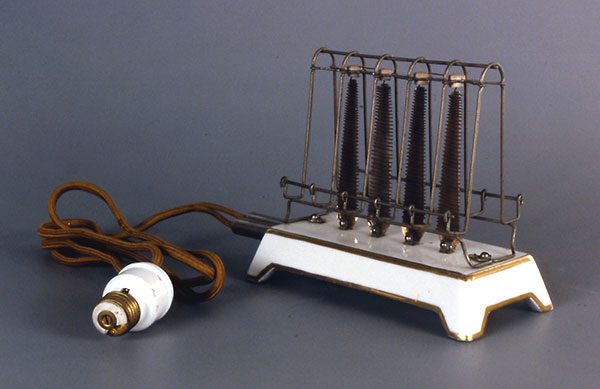
At that time, only one in seven American homes had electricity—it was still a luxury for many, so the D-12 electric toaster was often only used in restaurants. The real game-changer arrived in 1919 when Charles Strite invented the first commercial grade pop-up toaster called the Toastmaster. It was modified for home use and sold publicly in 1926, which was well timed as more homes were getting electricity, and pre-sliced bread had become popular. It had a built-in timer and a spring that launched the toast when it was ready—its basic design is still used in toasters today.
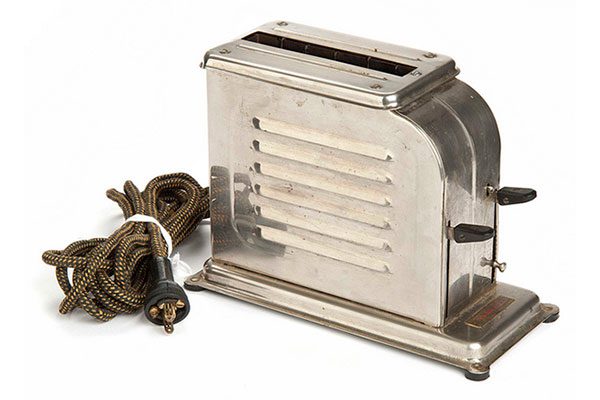
How a toaster works
A toaster browns sliced bread using radiant heat from electricity flowing through nichrome wire, which gets hot enough to toast the bread but doesn’t melt. The wire is usually wrapped around a heat-resistant material like mica and arranged in loops inside the toaster. When you push down the toaster’s lever, activating an electrical circuit, the wire heats up and gives off infrared energy, plus a bit of visible red light (which you can see glowing red inside the toaster). The wire acts like a resistor, transforming electrical energy into heat energy. Because nichrome has a high resistance to electrical current, it generates heat due to this resistance. The browning happens thanks to the Maillard reaction, which creates that toasty colour and flavour. Once the toast pops up, the wire cools down quickly, ready for the next slice.
The pop-up toaster isn’t just about heat—it’s also about clever mechanics. Inside, a spring loaded tray awaits bread, but when you push the lever down, it stretches the spring and locks the tray in place, completing an electrical circuit so that charge can flow through the heating elements. At the same time, metal grills also squeeze the bread to hold it upright, so it doesn’t touch the hot nichrome wires.
In older toaster models, the latch that holds the tray down was linked to a timer, controlled by a bimetallic strip—two different metals joined together that expand at different rates when heated.
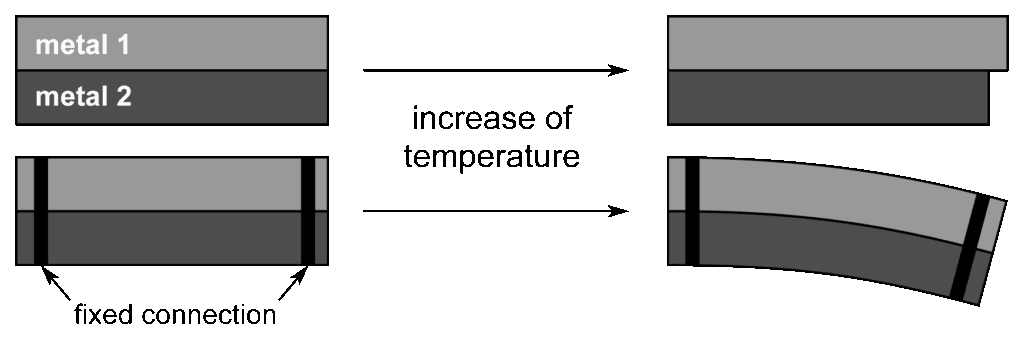
As electrical charge flows through the strip, it heats up and bends until it breaks the circuit, which triggers the latch to release and the spring snaps back into action and the toast pops up.
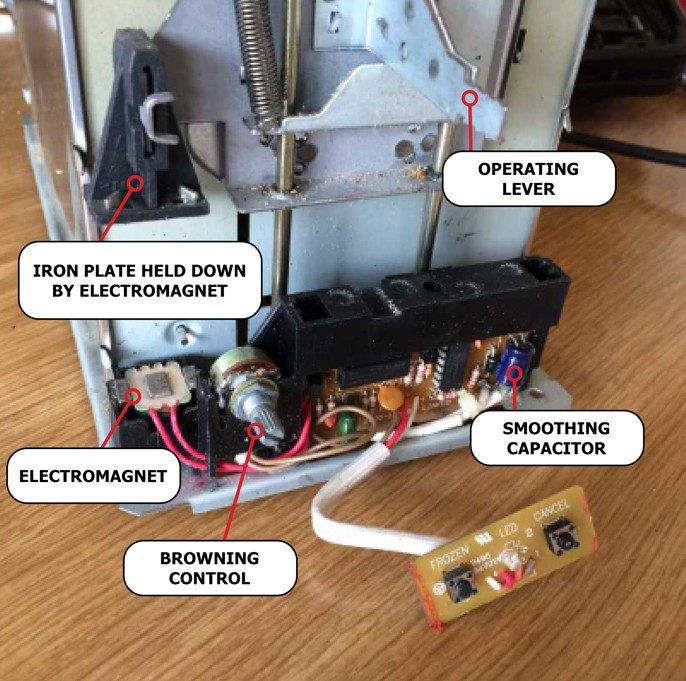
More modern toasters hold the tray down with electromagnets that are energised along with the element, and the current is interrupted after a pre-set time by a timing mechanism, causing the toast to pop up—that’s why some levers won’t stay down when the toaster is unplugged as it needs the electrical current to activate the electromagnet.
Mechanical timers
Aside from the bimetallic strip timers, there are mechanical timers, similar to an old-fashioned kitchen timer where the numbers on the dial represent specific time intervals for toasting—once the set time elapses, the timer releases the lever. Some toasters use a capacitor (below), which is like a mini rechargeable battery. A capacitor has two metal plates with an insulator (like paper, mica or plastic) between them. Electricity builds up on the plates until the capacitor is full because charges can’t flow through the insulator. The toaster dial controls how fast it charges—once it hits a set voltage, it flips a switch to pop the toast. And even digital timers, often controlled by a microprocessor, determine the toasting duration and power output. The microprocessor can read data from sensors, such as those monitoring the bread’s temperature, and adjust the toasting process accordingly.
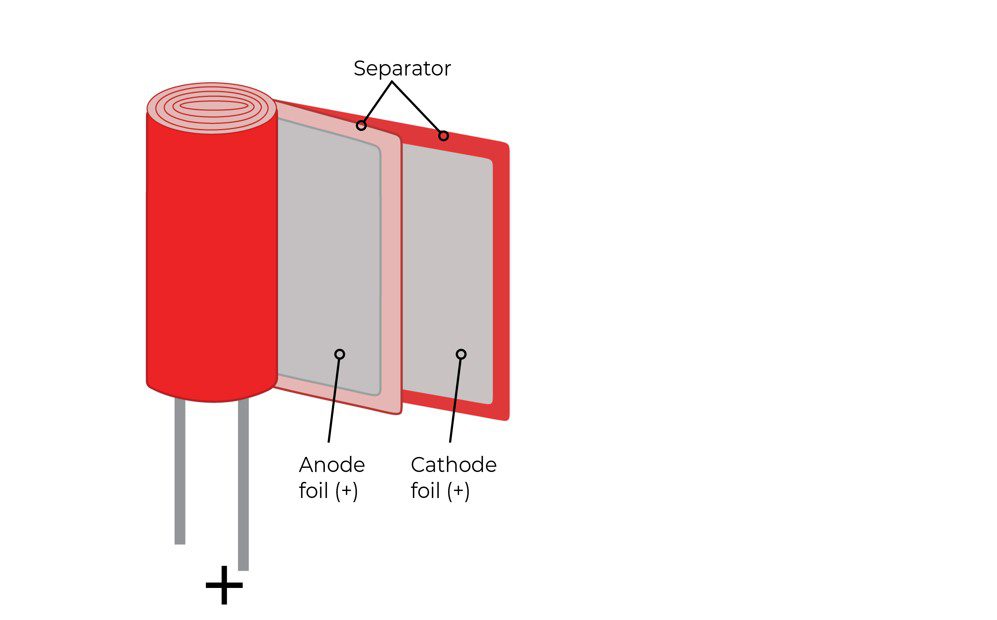
Toaster dial
The dial on your toaster controls how long it heats your bread. Inside, it adjusts the amount of current through the timing mechanism. A toaster with a bimetallic timer sends less electricity for longer on a higher dial number, making the toast browner. A lower number setting heats the switch faster, so the toast pops up sooner. This also explains why your toast can come out darker on cold mornings—when the switch starts colder, it takes longer to heat up and shut off the toaster.
The Great Toaster Hoax
The inventor of the humble toaster seems an unlikely hoax topic, but that’s what happened in 2012. Two university students played a prank after their professor warned them not to trust online encyclopedia Wikipedia too much for research, joking, “Because you never know who might set themselves up as the inventor of the toaster.” So, they did just that. They created a fake Wikipedia page claiming that a Scottish
inventor named Alan MacMasters (after one of the students) built The Eclipse, the first electric toaster, in 1893. They even made up details, photos and stories to make it sound real. Their prank was so clever that it fooled newspapers, websites, and experts for almost 10 years. People even held special events to celebrate MacMasters, a fancy dessert was made in his honour on a BBC cooking show, and the Scottish government listed the toaster as one of the country’s great inventions.

The page stayed online for nine years until a 15-year-old noticed something was off—the inventor’s photo (below) looked edited. The teen told a group that checks Wikipedia facts, and the page was soon removed. This hoax is an excellent reminder to double check information, especially online. Even everyday things like toasters can have surprising—and totally made-up—stories behind them, which people believe today.
Nichrome and mica
Ever wondered how the wires in your toaster get hot enough to brown bread without melting? The secret is nichrome—a special metal alloy made mostly of nickel and chromium. Invented in 1905 by Albert Marsh, nichrome has a super high resistance to electricity. That means when electric charge flows through it, it heats up fast—without burning out or melting. It can handle temperatures around 1,400°C—that’s hotter than most lava and enough to fuse sand into glass.
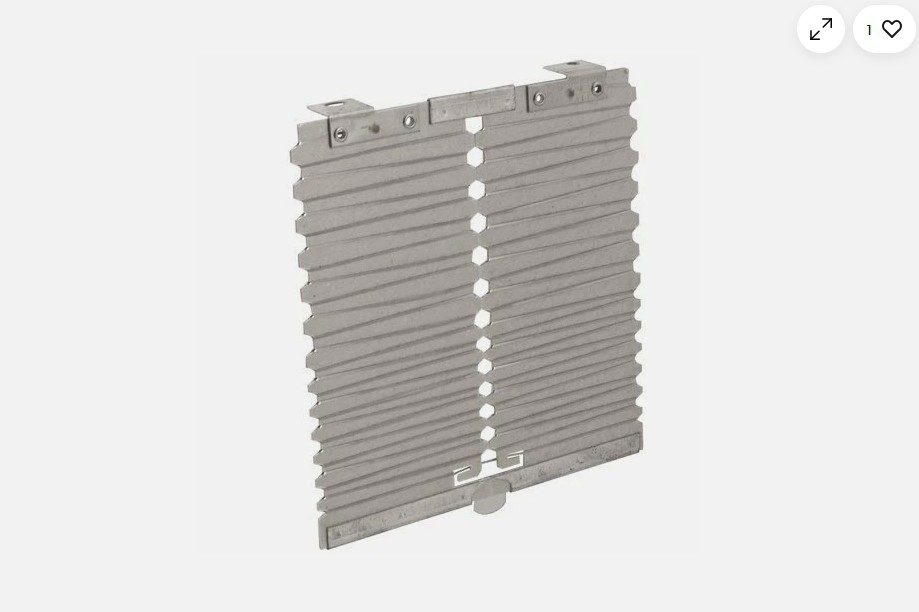
Nichrome wire can be heated hundreds of times without breaking, making it perfect for heating elements in toasters, kettles, hair dryers and ovens.
It’s also affordable and easy to work with, which is why it’s still the go-to material for these everyday appliances. Take a peek inside your toaster when it is turned on, you’ll see the glowing nichrome wrapped around mica sheets (right).
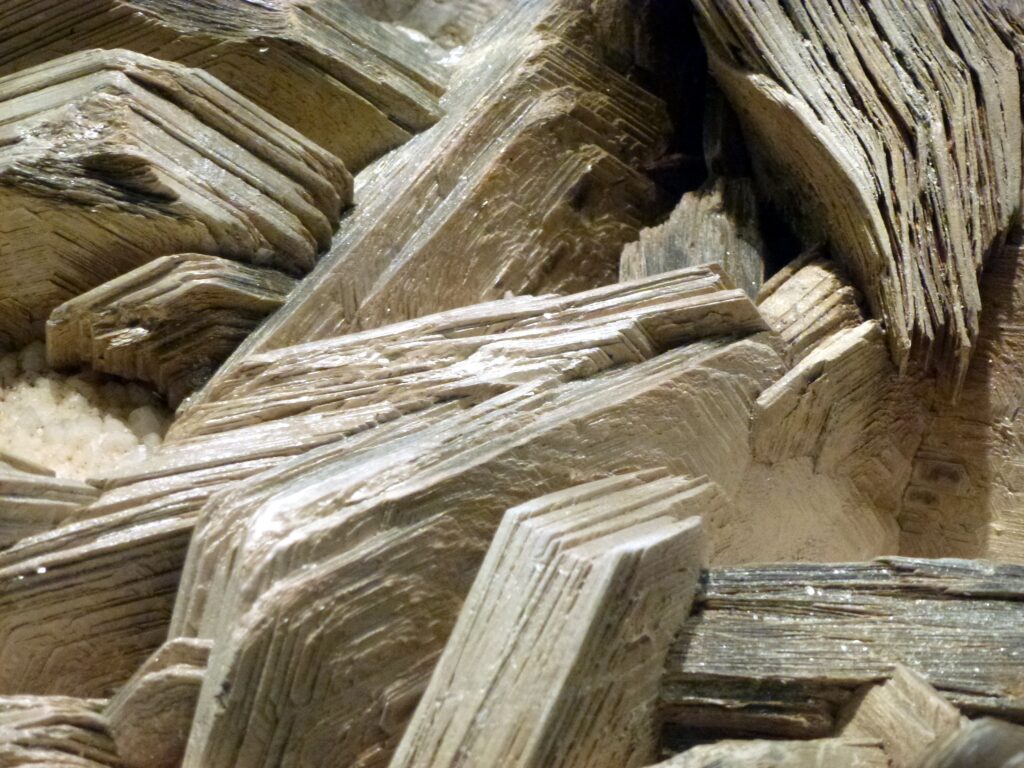
Mica is a mineral with excellent insulating properties, meaning it can block both electricity and heat. It doesn’t melt easily and can handle very high temperatures, which makes it useful in electronics. Because mica can be split into thin, flexible sheets because of perfect basal cleavage, it’s ideal for safely wrapping or separating electrical parts to prevent short circuits or overheating. It has a pearly finish and
comes in a variety of colours from white to black.
[LEFT: Image Pascal Terjan CC BY-SA 2.0]
Making Toast: Is it a physical or chemical reaction?
Making toast might seem simple, but it’s actually an example of a chemical change that makes a new substance. When bread is heated in a toaster, it doesn’t just dry out or burn—it undergoes something called the Maillard reaction. This is when the bread’s sugars and proteins react together at high heat (above 140°C), creating hundreds of new flavour and aroma compounds. These are what give toast its golden-brown colour and that delicious smell—one of the key ones is a compound called acetyl tetrahydropyridine (6-acetyl-1,2,3,4-tetrahydropyridine), which smells like toast and crackers. But this reaction only works within a narrow temperature range—too cool and nothing happens, too hot and the sugars start breaking down into charcoal. That’s why toast burns if you leave it in too long. While Maillard browning looks like caramelisation, it’s a different process—caramelisation involves only sugars, while the Maillard reaction needs both sugars and amino acids.
Fun fact: Your nose is amazing! It can detect acetyl tetrahydropyridine—the compound that gives toast its mouth-watering smell—even when there’s less than one molecule of it in every ten trillion. That’s why the scent of toast can fill your whole house so quickly.

Burnt bits and health risks: Should you scrape?
When toast is burned, it moves beyond the Maillard reaction, and the bread’s molecules begin to decompose, producing carbon and other chemical compounds, giving the toast its blackened, charred appearance. So, should you eat burnt toast? Well, that depends—how attached are you to your nervous system?
Back in 2002, scientists in Sweden discovered that when we toast bread past golden-brown into the realm of charred black, a compound called acrylamide forms when the sugars and the amino acid asparagine react under high heat—part of the same Maillard reaction that gives toast its flavour. While researchers haven’t nailed down whether the amount of acrylamide in burnt toast will definitely cause cancer, it is carcinogenic in animals (though only at very high doses) and neurotoxic in humans. So, if you’re a daily toast burner, it might be worth scraping off any black bits to help your brain and long-term health, just in case.
Toasting trends: Smart tech and future designs
For something so common in kitchens around the world, the basic toaster hasn’t changed much in decades. It’s still a box with nichrome wires that heats up, browns your bread, and pops it up when it’s done. Despite wider slots for bagels, sleeker designs, colourful finishes and heat-resistant plastic—the core mechanics have stayed largely the same. Until now. The next generation of toasters is seriously
smart. New models are being designed with sensors that check moisture levels and toast colour, adjusting the process in real-time for perfect results. Microchips are being used to personalise settings for different users and some even connect to your phone via an app so you can start toasting from bed. Others are experimenting with super-fast heating materials, see-through glass sides so you can watch the browning in action, or even laser toasting that can burn pictures or messages. The humble toaster might finally be stepping into the future—smarter, quicker and a whole lot more fun.
Ngā kupu
tōhi: toast (food)
whakatōhi: toaster
tītara: toast rack
taro: bread, loaf of bread.
mira parāoa: bread knife
Classroom activities
BBC | Explore air expansion with a toaster balloon.
National Oceanic and Atmospheric Administration | Learning Lesson: Toasty Wind – learn how wind is created by heat that rises.
Resources
StarTalk | How An Astrophysicist Makes Toast with Neil deGrasse Tyson. [YouTube]
Main toaster image: Вадим Биць

